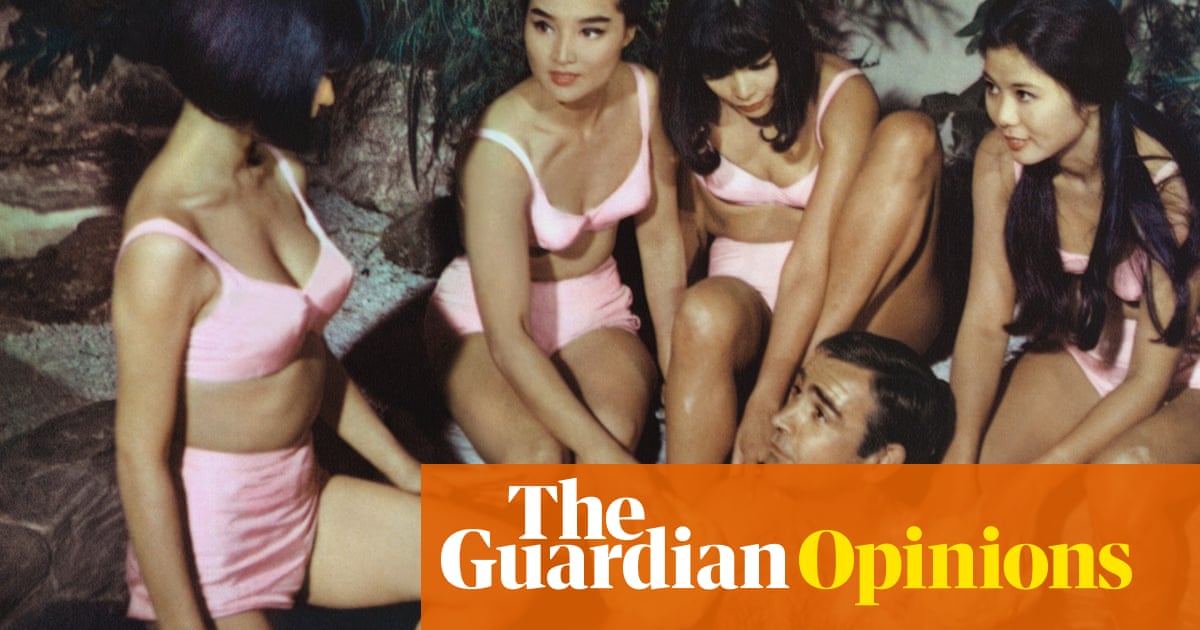Helen Mirren has said that there is no earthly point in getting a woman to play James Bond because the world’s most famous fictional spy was “born out of profound sexism”.
The first thing to say is that of course she is right. Of course Bond was born of reactionary attitudes and only a bore would point out what the DBE stands for in Mirren’s title. If you doubt the truth of what she says, watch the cringeworthy moment in Goldfinger when Sean Connery’s Bond dismisses his poolside masseuse Dink (played by Margaret Nolan) because he needs to discuss important stuff with Felix Leiter, and as Dink obediently leaves he slaps her behind and says: “Man talk …” Obnoxious.
Perhaps a further and even more uncomfortable point is that the Andrew Tate/JD Vance contingent would broadly agree with Dame Helen: yes, the wokery of casting a woman as 007 is unthinkable for precisely the reasons she says but on which they have different views – and, incidentally, the female-casting topic is a clickbait talking-point never seriously considered by anyone in any relevant position of authority at any time. Jeff Bezos (himself a stereotypical Bond villain) may countenance all sorts of product variations, perhaps even continuing to have a female agent with the notional “007” rating. But James Bond will be a separate bloke.
Helen Mirren’s denunciation of Bond is part of a long-standing exasperation which began with Paul Johnson who in 1958 famously denounced the Ian Fleming books in which 007 displayed “the sadism of a schoolboy bully, the mechanical, two-dimensional sex-longings of a frustrated adolescent, and the crude snob cravings of a suburban adult”. As the movie franchise has developed, it is of course the second of these three qualities which has taken over; the movie Bond has not been sadist or a snob for many decades – but his sex-obsession and his status as an object of sex-obsession, has grown and metastasised. Everything around him is sexy: cars, luxury watches, weapons, explosions, women. And as Nigel Tufnel says in This Is Spinal Tap: what’s wrong with being sexy?
But there is something else to be noticed in what Dame Helen says: she uses the antique term “sexism” and not “misogyny” which has long since supplanted “sexism” in the discourse. Maybe it is a generational thing. But in fact Helen Mirren is using her words correctly: “sexism” and “misogyny” are not interchangeable: however antediluvian most have been in their attitudes, the Bond films do not encourage hatred of women, at least partly because of the comedy and absurdity, and the case has been made for a sex-positive reassessment.
And of course now the Bond franchise has evolved away (a little) from the quaint ladmag archetypes. For a while, M was a woman, in the form of Dame Judi Dench. In No Time to Die, Lashana Lynch played the separate “007” agent — tough, capable and derisive of the ageing Bond, in a film co-written by Phoebe Waller-Bridge.
But what the Bond films need is the most progressive innovation of all: not a female Bond but a female Bond villain. We have had figures such as Elektra King played by Sophie Marceau in The World Is Not Enough – but they have never really had the clear status of alpha-villain. For the next Bond film we need a lethally powerful and charismatic woman with a prestigious acting pedigree to play the antagonist, someone who has, say, played the MI6 assassin Vicky Winslow in the macho action comedy Red, and the criminal matriarch Queenie Shaw in the (equally macho) Fast and Furious franchise spinoff Hobbs & Shaw. The next 007 film will be a hit if they can persuade Mirren to be the villain. And the new Bond would certainly have to raise his game.
